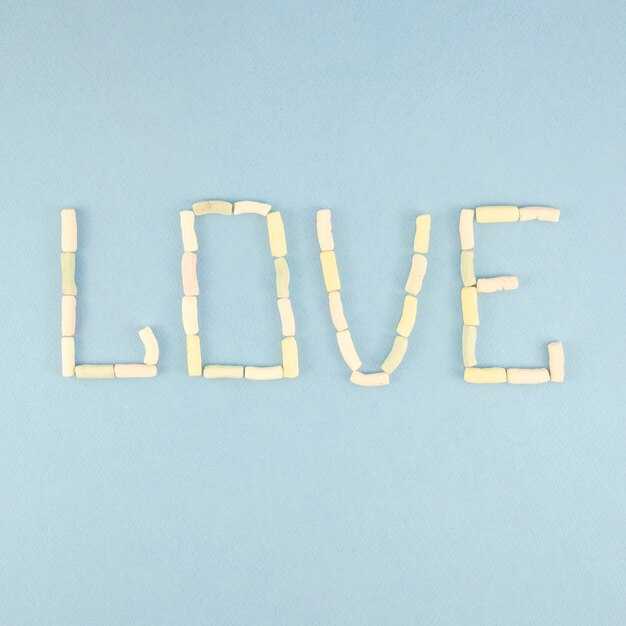Estimates suggest roughly 15% of people experienced significant trauma in childhood—depending on how you define “trauma.” Many of those people don’t even realize they were harmed. Some notice symptoms, seek help, and actively work on recovery, but a large portion silently suffer with what’s usually called complex PTSD. If you’re among them, you may live with a constant dread that you’ll end up stuck—unhappy, unloved, unfulfilled, or chronically unstable financially. That fear is understandable: untreated cPTSD can indeed make those outcomes more likely. It’s also hard to know, especially when you’re first starting to heal, which steps will truly help. But giving up guarantees a worse chance of change. Maybe you’ve tried certain approaches only partially, or you’ve known the right steps but lacked the inner drive to follow through. Today’s message is an encouragement to take your recovery seriously—to commit more fully—because healing is possible. Below are ten practical directions I share with clients and students. Not all will apply to everyone, but once you’ve read them you can pick one or two concrete actions to begin today. Choose items that address the sources of pain you’ve felt before and that are actually doable now—quick wins build momentum, and persistence matters in trauma recovery.
Number one: learn about complex PTSD—not just the soundbites on the internet or other people’s labels, and not by comparing your life to someone else’s diagnosis. Study how cPTSD affects the brain and nervous system: what dysregulation looks like, how emotional regulation and re-regulation work, and the practical differences that knowledge makes in life. Only recently has medicine recognized cPTSD as an injury to the brain and nervous system; many clinicians still operate on older ideas. Educating yourself helps you choose professionals who truly understand what’s happening and lets you base treatment decisions on current science rather than myths.
Number two: be willing to notice problems in your life that aren’t purely trauma-driven. Yes, cPTSD can impair focus, consistency, kindness, presence, relationships, and health—but some issues are ordinary human weaknesses rather than direct trauma symptoms. Maybe you’re often late, or your kitchen habit leaves it smelling bad and embarrassing you when guests visit. Those “normal” problems are often easier to fix and are perfect low-hanging fruit. Solve one practical thing quickly and you get a small victory that boosts confidence for the next step. Healing requires incremental effort.
Number three: learn to move memories of abuse and neglect out of present-time, looping thinking and into a stable memory space. Imagine a “memory bucket” separate from your present awareness. cPTSD tends to trap emotional and bodily reactions from past trauma, replaying them as if they were happening now—triggering adrenaline, cortisol, racing heart, scattered thoughts, and a full-body stress response. That’s different from remembering an event calmly. The goal is to access memories without being physiologically hijacked by them. Some trauma memories are “electric” and cause intense responses; others are neutral memories that don’t charge your system. Be open to the possibility that you don’t always have to react. There are methods to calm these reactions—I teach one called the Daily Practice, and there are many other approaches. The Daily Practice is offered as a free, short course linked in video descriptions; learning even a basic technique can help you name and release stressful thoughts and reduce the loop of reactivity. If surrendering fear and resentment feels threatening—because those emotions sometimes function as primitive boundaries—start small. Try a little at a time and notice whether releasing fear leaves you incapacitated or lighter and more capable. For many people, facing a painful memory and writing it down paradoxically reduces its hold and clarifies when something is genuinely dangerous versus when it’s simply a memory.
Number four: stop trying to force other people to stop triggering you. Almost everyone with complex PTSD finds social contact triggering at times, which is why we may isolate or keep people at arm’s length. It’s tempting to believe that if others would only change their behavior, you’d be fine. Rarely does that work: triggers originate inside you, and most people aren’t willing or able to restructure their whole behavior to protect you. Learning to calm your own triggers is more effective, empowering, and realistic. When you can quiet your reactivity, you become better at discerning whether someone is genuinely harmful or whether your internal trigger is creating the drama. Discernment—the ability to distinguish “is it me or is it them?”—is often blunted by cPTSD. Strengthening discernment through practices like structured writing, therapy, community groups, or 12-step programs helps you see people and situations more accurately. When you can tell the difference, you gain choice: you can step back from genuinely toxic people, or you can invest in relationships that are worth fixing. Calming triggers also makes you more flexible socially; you can be present with a wider range of people and circumstances without being overwhelmed. Learning to notice dysregulation and bring yourself back into regulation is a major part of trauma recovery; when you do this, parts of you that trauma suppressed—your kindness, talents, competence, and joy—get room to emerge.
Number five: stop labeling and trash-talking the people you keep in your life. It’s easy to slap a convenient label on someone—“narcissist,” “toxic,” “abusive”—and then carry on. If you want to heal, shift the focus from labeling others to noticing how their behavior affects you—how you tense, get dysregulated, or struggle around them. That internal reaction is where you have practical influence. You retain the right to decide who you let into your life, including withdrawing when boundaries require it. Recovery will let you be at peace with the people you keep and quicker to distance yourself from those you shouldn’t. That doesn’t mean tolerating terrible behavior. It means being clearer, steadier, and more perceptive about how to respond: opening up to relationship when it’s safe and closing off when it isn’t.
Number six: stop clinging to relationships that drain you. Staying in a relationship that consistently depletes you—whether through constant fighting, abusive behavior, severe disrespect, or persistent sadness—will stall your healing. I know some ties are complicated by duty and care responsibilities (dependent children or others who rely on you), and leaving those situations may require planning and outside support. But wherever possible, move toward distance from relationships that are destroying your capacity to heal.
Number seven: the same principle applies to jobs—don’t stay in work that makes you miserable unless you truly have no alternative. Short-term compromises are sometimes necessary, but long-term suffering at work is avoidable. Ask whether your misery at work is unconsciously chosen to avoid facing something harder in your life. Many people trade meaningful change for the apparent safety of an unhappy but stable job. Sometimes losing a “secure” job forces new, creative paths—like starting a business—and can lead to a better life. Trying matters; success tends to favor those who try.
Number eight: stop believing you just attract bad people like it’s a mystical curse. People will say, “I attract narcissists,” but that’s not the point: the real question is whom you allow in—who you tolerate, date, or sleep with. Most patterns of being drawn into unhealthy relationships reflect boundary problems, a muted “red-flag detector,” or tolerating behaviors you shouldn’t. You do have agency: become the gatekeeper. Notice tendencies to tolerate too much and switch your detector back on. It’s not magical; it’s practical responsibility.
Number nine: if you have addictive behaviors, make recovery your top priority. Alcohol, drugs, compulsive eating, pornography, overspending, or obsessive limerence (an addictive romantic obsession) all interfere with healing. Escaping life’s discomfort through substances or compulsive behaviors prevents you from sitting with disappointing feelings, stress, emptiness, and loneliness—feelings that sometimes point you toward necessary action. Recovery frees your capacity to face life’s ups and downs, which will always come even after healing. Whatever method you choose for recovery, also learn reliable ways to self-soothe and re-regulate, so you don’t fall back into escape. When you have consistent tools to calm yourself, addiction loses some of its power.
Number ten: try this thought experiment—if you absolutely had to solve the problem of cPTSD, what ten actions would you take? Write them down. This can be applied to any issue but is especially useful for trauma recovery because you likely already carry many possible solutions inside you; you may just not have tapped them or had energy to implement them. List ten ideas—even absurd ones—to bring them into awareness. Then prioritize what’s important and feasible right now. Studies show clutter around the home correlates with higher rates of anxiety, depression, social isolation, and concentration problems—but that research often assumes clutter causes these symptoms. My hypothesis is bolder: clutter is frequently another symptom of trauma, interacting with depression, anxiety, and attention problems rather than being the sole cause. Trauma alters neurology and behavior, producing compulsive accumulation, avoidance, and overwhelm. “Cluttering” can be an amplified version of a normal nesting instinct (making home comfortable and prepared) that becomes dysfunctional when driven by trauma. Whether it’s rotten food in the fridge, mountains of unsorted papers, or a toolbox buried under junk, clutter reflects a lack of inner power to act, and reclaiming that power helps free up emotions and attention.
Physical clutter is the most visible form—rooms, garages, cars, or workspaces piled with items you don’t use. Examples include holding onto clothing in every size “just in case,” boxes of unused silverware “for the future,” broken bikes you never fix, or cabinets full of cans you bought during a panic and never eat. If you can realistically sell something and have a plan, do it; otherwise, donate it. A practical rule of thumb: if you could replace an item for a modest amount (say $20–$50) and you’re not using it, consider letting it go. For larger items like a car, determine whether you can realistically sell it; if not, donating or arranging pick-up may be the quickest solution and relieves the ongoing burden. Breaking tasks into tiny, sequenced steps (using a whiteboard or simple digital Kanban-style tool) can make multi-step chores manageable; those systems let you move tasks across columns—“to do,” “doing,” “done”—and reduce overwhelm.
Toilettries and makeup are another area where people hold on for sentimental or thrift-driven reasons. A professional makeup artist once helped by having me empty my entire collection; anything old, unusable, or unsanitary was simply thrown out. There’s relief in letting go of items tied to a former life or identity. Sentimentality and fears of future scarcity often keep us hoarding; replacing that with present-moment practicality is freeing.
Mental clutter—too many unresolved thoughts—can make it hard to prioritize or to see choices. Tools like to-do lists, timers, calendars, and a morning writing practice (to name and release fears and resentments) help offload the mental noise. Emotional clutter comes from old beliefs and resentments you rehearse beyond their usefulness (“I was the black sheep; I’ll never belong”) or from replaying grievances that have expired their usefulness. Holding onto those stories freezes your emotional life. Work through grief and anger in healthy ways so those memories can move to the past conveyor belt and make room for new experiences. Social media outrage and compulsive news consumption are forms of emotional clutter: if the media you consume provokes chronic anger and division rather than useful action or necessary information, it’s doing harm. Trim what you consume to what’s genuinely helpful or uplifting.
Relationship clutter is the mix of people in your life—some nourishing, some draining. If you’re oversupplied with obligation or coerced contact, make space for fewer people who truly support you. You don’t need elaborate reasons to step back from someone; clarity helps, and sometimes you’ll want coaching or a structured program to get perspective.
Time clutter is overcommitment: filling your schedule so you never have unscheduled space to rest, reflect, or do meaningful work. Over-functioning to earn approval through busyness is common in trauma survivors. Schedule open, unscripted time—even a blank half-hour—because rest and unstructured space are sources of creativity and the place new possibilities arise. Decluttering time and possessions often makes life more open and invites responsibility—the opposite of avoidance.
If you begin decluttering, don’t be surprised when old feelings surface. To sustain the effort, pair clearing with methods to process those emotions rather than stuffing them down again. One useful tool is a daily practice of writing and re-regulation (there are free courses and resources you can find linked in many coaches’ video descriptions) that teach simple, repeatable ways to calm physiological reaction and manage the friction that comes up when you change long-standing habits.
A few urgent words about relationships and addiction in real crises: when passionate letters arrive describing limerence (an obsessive, addictive fixation on another person), some cases are emergencies. One such example came from a man who’d battled limerence since adolescence, described a chaotic childhood with alcoholic and conflictual parents, then decades of codependent rescue behavior. As an adult, his life included a deeply disabled child; he became obsessed with vulnerable women on the margins—homeless, addicted, at risk. He repeatedly intervened and became the center of their crisis, even when that involvement endangered his marriage, his child’s stability, and the women themselves. After one woman he’d sought to help died of an overdose, he felt both devastated and relieved; later, a similar pattern returned with another vulnerable woman, and he feared that the only way to prevent further harm would be to maintain his involvement—despite the destruction it was causing.
When a situation like that arises, it’s a moral and practical emergency. Rescue fantasies and the “I can fix them” impulse can be addictive and destructive—to you, your family, and the vulnerable person. If the relationship is feeding an addictive pattern that risks your family’s stability, a decisive boundary is required: immediate no-contact is often the safest option. Seek professional help right away: a therapist experienced with sex and love addiction, a specialized program, or a men’s-only support group like Sex and Love Addicts Anonymous can provide urgent structure and accountability. Don’t let helpers enable the behavior; find professionals who recognize the crisis and are willing to demand clear, protective steps. Consistently putting your family’s and vulnerable people’s safety first means refusing to continue the behavior—even when it feels heartbreaking. Replace the illusion of rescue with real, sustainable supports for your family and the people you care about.
Finally, healing must be paired with learning to lift your mood. It’s easy to get trapped in discussing trauma endlessly without cultivating actual moments of joy—and those bright moments are fuel for perseverance. Small, practical shifts can produce immediate mood lifts and build the inner power necessary to make bigger changes. You don’t have to wait for perfect circumstances to feel better. Try these accessible strategies to raise your baseline mood and energy:
– Get up an hour earlier than usual. It reduces the morning scramble and prevents the immobilizing or hurried starts that trigger dysregulation. Even if you’re tired, an intentional morning routine helps.
– Do focused writing to unload anxious or resentful thoughts. Structured techniques that move stressful thoughts from mind to paper give your thinking space to be creative instead of stuck in rumination.
– Meditate. Even five minutes of quiet rest, twice a day if possible, gives your nervous system a break. You don’t need elaborate rituals—rest, close your eyes, use a gentle anchor word, and let thoughts pass without judgment.
– Exercise vigorously for at least 20 minutes. Raising your heart rate—running, brisk walking, or another aerobic activity—can dramatically reduce panic and reactivity. Outdoor exercise adds the restorative benefits of daylight and fresh air.
– When possible, exercise in a group or take classes. Moving with others, following an instructor’s verbal cues, and mirroring group rhythm supports nervous system recalibration and breaks PTSD fog.
– Eat protein with every meal. Avoiding repeated carbohydrate spikes helps stabilize energy and mood; blood-sugar crashes can worsen feelings of numbness or overwhelm. If eating patterns are problematic, consider a nutrition plan that minimizes insulin spikes.
– Reduce overwhelm by planning: each morning decide the top three tasks for the day (or even the single most important task) and do that one first. Prioritizing eliminates the drain of indecision.
– Try not to talk compulsively about negative things. Constantly narrating problems keeps them alive. Occasionally, stepping away from recounting the story of a hurt can open space for mood to shift. This is especially useful when getting over a breakup—avoid talking about or checking the other person’s social media.
– Ask yourself what you’re avoiding. Often low mood is anchored to a single avoided task or decision. Identify the next actionable step and do it; action dissolves dread.
– Do a discreet kindness: help someone anonymously or in a way that won’t earn public credit. Secret acts of generosity lift your spirit without diluting the internal reward with external validation.
Recovery from childhood trauma is a slow, practical, and layered process. Decluttering physical space, minds, relationships, and time creates breathing room for growth. Start with what’s doable right now—one closet, one deadline, one conversation to end, or one grudge to release. As you practice calming your nervous system and build reliable tools to process feelings that arise, momentum grows. Small, sustained actions create the inner power you need to reclaim your life, make safer choices, and let the parts of you that trauma suppressed—joy, competence, kindness—shine through. You deserve that room to grow and the chance to live beyond what happened to you.


 Conseils pour se rétablir PLUS VITE des effets du traumatisme (Compilation en 4 vidéos)">
Conseils pour se rétablir PLUS VITE des effets du traumatisme (Compilation en 4 vidéos)">

 THIS Happens When the Avoidant Realizes They Lost You (Must Watch) | Jordan Peterson">
THIS Happens When the Avoidant Realizes They Lost You (Must Watch) | Jordan Peterson">
 Why Dismissive Avoidants Secretly Need Multiple Partners | The Psychology of Emotional Control">
Why Dismissive Avoidants Secretly Need Multiple Partners | The Psychology of Emotional Control">
 If your Ex was Narcissistic, you need to hear THIS">
If your Ex was Narcissistic, you need to hear THIS">
 This ONE Affection Hack Creates Unbreakable Bonds with Avoidants">
This ONE Affection Hack Creates Unbreakable Bonds with Avoidants">
 Pornography is EXTREMELY dangerous to your Relationship">
Pornography is EXTREMELY dangerous to your Relationship">
 Do Boundaries work on Narcissists">
Do Boundaries work on Narcissists">
 I figured out why my Relationships kept Failing.">
I figured out why my Relationships kept Failing.">
 I was adding to HER Mental Load.">
I was adding to HER Mental Load.">
 How to End Limerence Before You Destroy Everything Good">
How to End Limerence Before You Destroy Everything Good">
 LOVE Can’t be Built without THIS">
LOVE Can’t be Built without THIS">